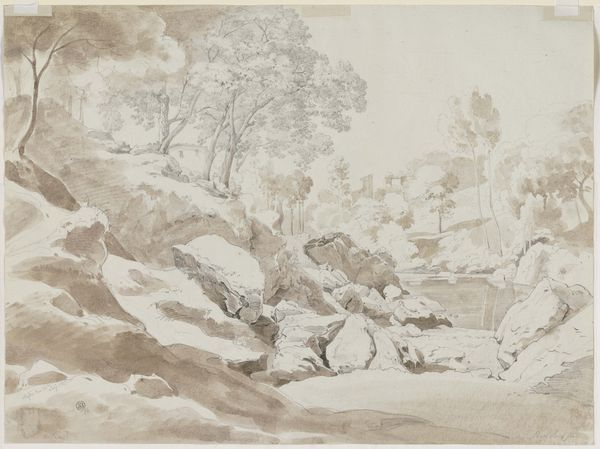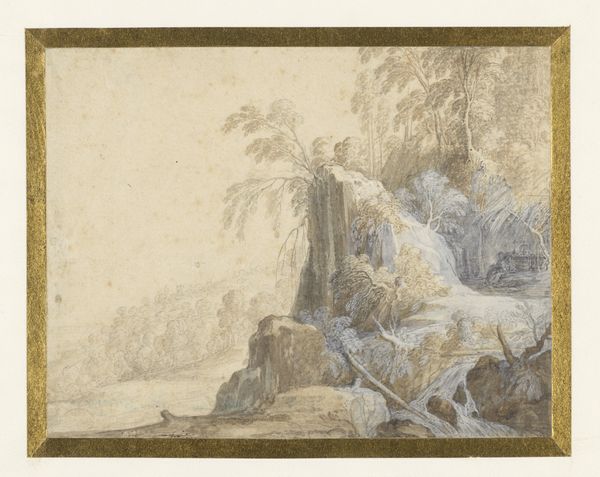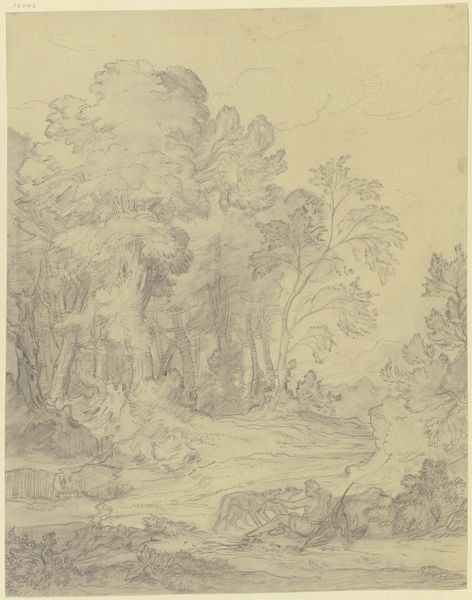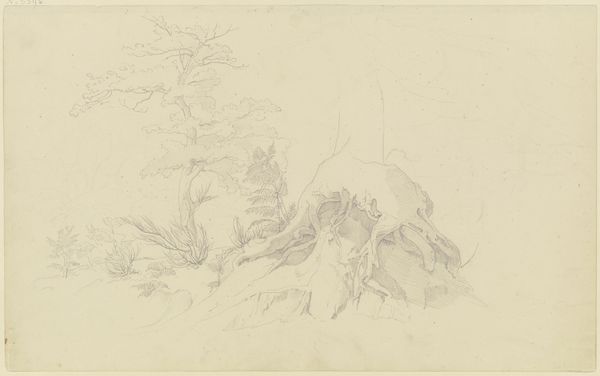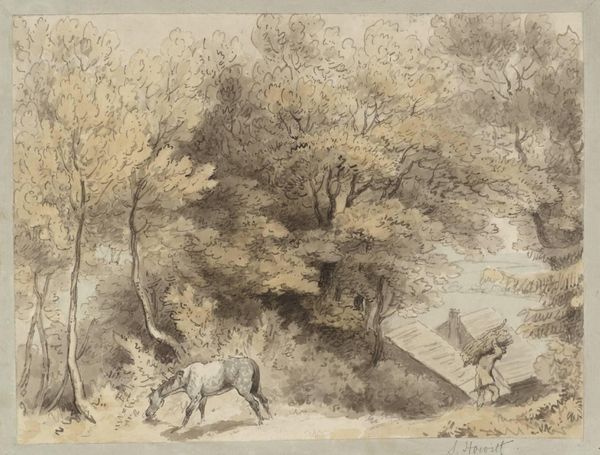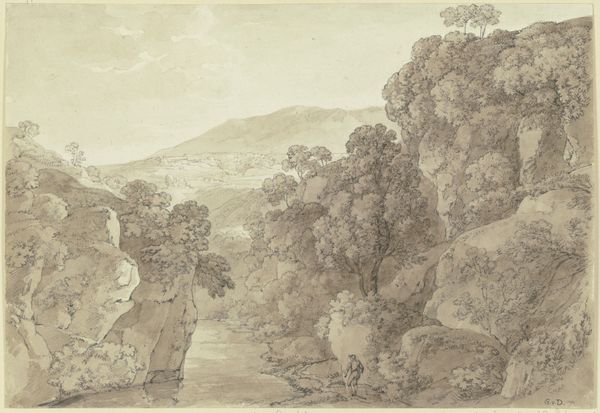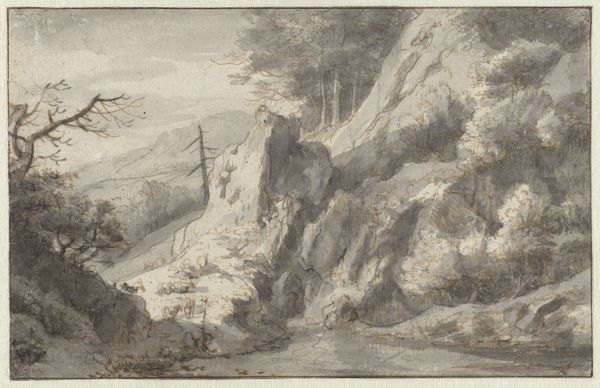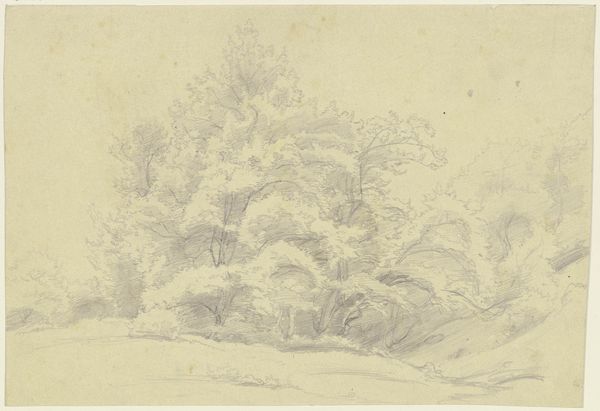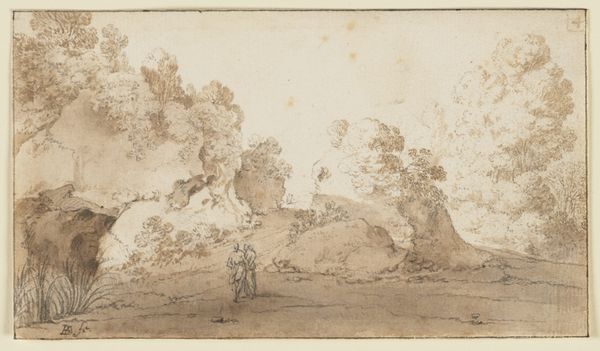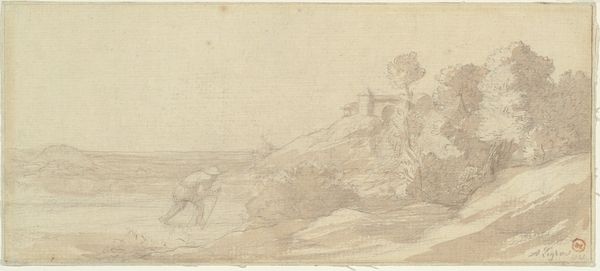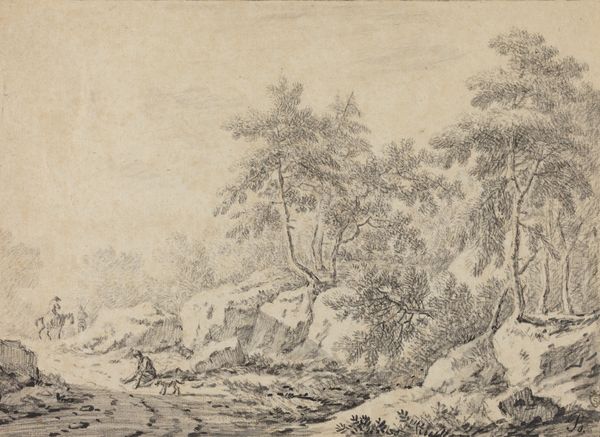
drawing, watercolor, ink, pencil
#
drawing
#
baroque
#
pencil sketch
#
landscape
#
watercolor
#
ink
#
pencil
#
watercolor
Copyright: Public Domain
Editor: We are looking at Dirck van der Lisse’s "Klage der Thisbe in romantischer Landschaft," which is a Baroque drawing made with pencil, ink, and watercolor. It has a sort of somber and mournful tone with its muted colors and classical scene. What stands out to you as a historian? Curator: What strikes me is how van der Lisse uses a classical narrative like the lament of Thisbe to construct a specific type of landscape, a "romantic" one as the title suggests. Ask yourself, what makes a landscape "romantic" during the Baroque period? It isn’t just the presence of ruins or classical figures. Editor: I guess I hadn’t really thought about how landscapes have a history too. I tend to see landscape painting as this timeless…natural thing. Curator: Exactly! This drawing speaks to the growing market for landscapes among the Dutch middle class in the 17th century. They weren’t simply depictions of the countryside, they were carefully constructed images imbued with cultural and sometimes political meaning. Think about the intended audience. Who was likely buying and displaying these works? And what associations did they carry? Editor: So the ‘romantic’ part isn’t just about, like, pretty scenery and doomed love? It’s about the whole cultural package it came with? Curator: Precisely. The lament of Thisbe, combined with the pastoral setting, becomes a marker of sophistication and good taste, fitting for a burgeoning mercantile class eager to display their cultural capital. Van der Lisse, in essence, is selling not just an image but a lifestyle. Editor: I never thought about art that way, I was so focused on composition and color. Curator: That's the power of history. It teaches us to look beyond the surface and see the complex web of social forces that shape what we consider "art."
Comments
No comments
Be the first to comment and join the conversation on the ultimate creative platform.

